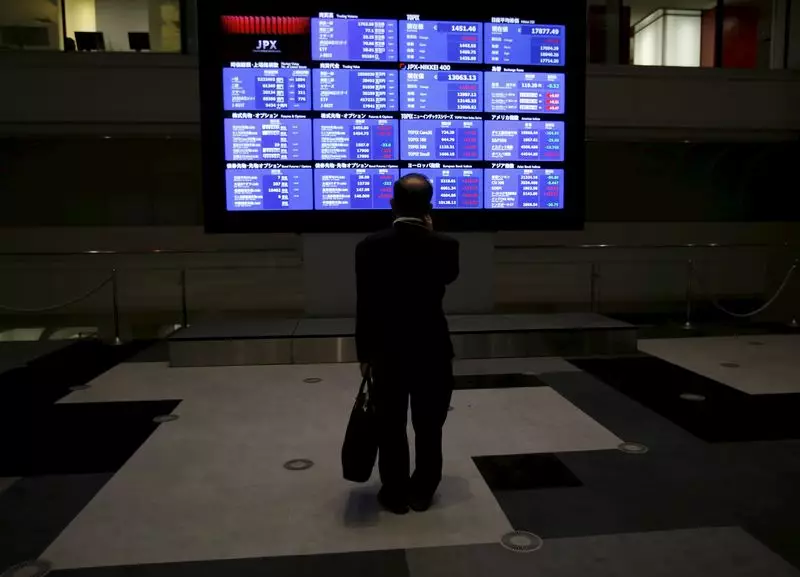The global financial landscape opened cautiously as Asian stocks displayed minimal movement during the early hours of trading. Investors are tangled in apprehension stemming from the vague details surrounding the Chinese government’s recent economic stimulus commitments unveiled over the weekend. The announcements, while ambitious in tone, lack the specificity that market players desperately seek, particularly concerning the scale of impending debt increases proposed by Finance Minister Lan Foan. Without concrete figures or timelines, the potential for a sustained rally in stock markets hangs in the balance.
Chinese equities have exhibited impressive gains recently due to expectations generated by one of the most substantial stimulus gestures since the pandemic’s onset. However, the aftermath of such declarations has seen momentum dwindle, leading to impatience as investors await more precise clarifications about the nature and applicability of support measures. It was anticipated that a clearer fiscal stimulus outline would be presented during a briefing by the Ministry of Finance, but the absence of explicit details could dampen investor sentiment at the beginning of the week.
Market responses are often compounded by analysts’ interpretations of political signals. Ray Attrill, the head of FX strategy at National Australia Bank, expressed concerns about the potential market reaction to the shortcomings of the stimulus announcement. This uncertainty is palpable, as stakeholders contemplate the wider implications of fiscal policy on consumer and investor confidence. Indeed, clarity around how the government plans to support its citizens remains a pressing question that, if unanswered, could exacerbate already existing market vulnerabilities.
The MSCI Asia-Pacific index saw a slight uptick of 0.12%, yet it is important to underscore that this follows a substantial decline of 1.7% the previous week. The general malaise in trading conditions can be attributed in part to the Japanese markets being closed in observance of a public holiday, further thinning trading volumes across the region. Concurrently, U.S. stock futures displayed marginal declines, signaling a reticent approach to potential investments amidst fluctuating global economic signals.
Recent data unveiled concerning China’s economic landscape adds layers of complexity to the unfolding narrative. Consumer inflation unexpectedly reduced in September, while producer prices face deeper deflation—unsettling trends that signal a pressing need for impactful stimulus measures. The offshore yuan experienced a slight depreciation of 0.2%, trading at 7.0842 per dollar, reflecting these broader economic anxieties.
Adding to this mix, the Australian dollar, often viewed as a proxy for the yuan, softened by 0.15%, exhibiting the cautious sentiment sweeping through market participants. Interestingly, despite the backdrop of uncertainty, analysts at Goldman Sachs raised their real GDP forecast for China to 4.9% from 4.7%. While some analysts assert optimism around recent stimulus announcements, others maintain a cautious outlook, reiterating that structural challenges—deteriorating demographics and multi-year debt corrections—could overshadow short-term fiscal adjustments.
As the week progresses, currency fluctuations seem confined within narrow ranges, influenced largely by the stabilizing role of the U.S. dollar. The dollar remains anchored as speculations on aggressive Federal Reserve interest rate cuts are reevaluated in the wake of economic indicators pointing to a resilient labor market and a modest uptick in consumer prices. The British pound and euro both saw slight declines against the dollar, signaling the global markets’ reluctance to embark on expansive investment strategies.
In the commodities market, oil prices reflected the prevailing apprehensions around demand, succumbing to pressures stemming from ambiguous economic signals. Brent crude futures dipped by 1.39%, and the WTI equivalent followed suit with a 1.4% decline. Concerning the yellow metal, spot gold receded slightly, settling at $2,646.63 an ounce, reflecting the adjusting mindset of investors in response to global economic health indicators.
The complex interplay of stimulus announcements, inflation data, and currency behavior underscores the systematic vulnerabilities present in the current market atmosphere. Investors face an uncertain terrain as they await further insights into China’s fiscal plans while balancing the implications of broader global economic indicators. The decisions made in the coming days will likely shape the trajectory of market confidence—or lack thereof—as stakeholders navigate the delicate balance of optimism amidst looming uncertainties.

